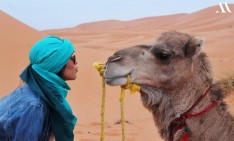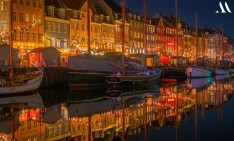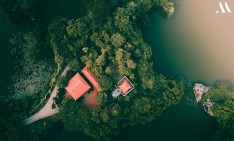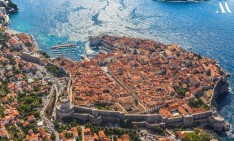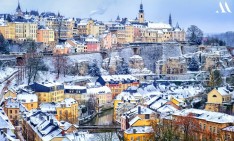There are incredibly beautiful places, and then there is Leh Ladakh, one of those places where you need to open yourself up and let it consume you completely. Be assured, what will become of you will be truly profound. When Leh happens, it is truly a breath of fresh air, a sense of elation and quiet. It demands undivided attention, and being there slowly liberates you from the locked up darkness within. The incomparable desolate beauty of the Himalayan, Zanskar, Ladakh, and the Karakoram mountains has people coming here from every stride to be inspired.
If you plan to fly up there for a 4-5 days trip and cover major places like Monastries, Pangong Lake and Nubra Valley, then here’s what you should know before you travel.
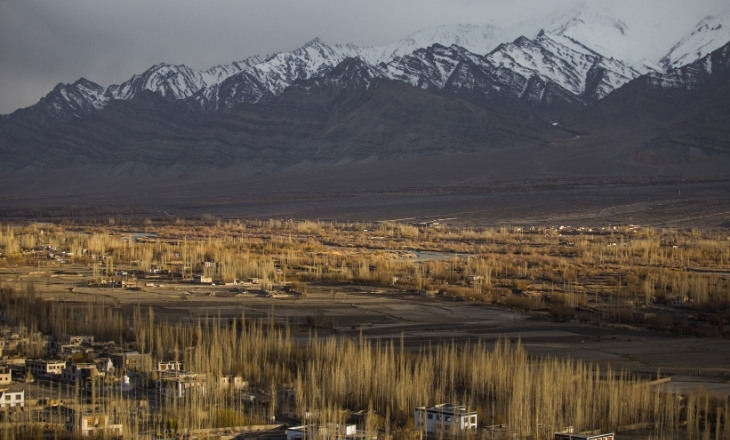
The experience once you reach is very unusual. Upon landing, you feel dizzy when you step out of the plane: high altitude and a dearth of oxygen results in breathlessness, headache, and a strange suffocation feeling. You won't find much greenery & the region is pretty deserted at that. There is an old Ladakhi saying…
"Our land is so barren, and the Passes so high, that only the best friends or the fiercest enemies come to visit us".
With this, you might think about why to go there at all? But be assured it's an experience of a lifetime. Once you are there, take the measures the locals tell you to.
On the first day on arrival, restrict your movements to a bare minimum, drink water as much as you can, seriously as much as you can! Sleep, sleep, and more sleep. Let your body acclimatize to the atmosphere there.
Leh and Monastries |
Day Two, you can start moving around the town. You will find a constant presence of military, convoys, camps and memorials, and a sense of pride fills you naturally.
For those who still have some breathing problem, stick to places close by, visiting monasteries is a good idea.
The major ones are within the periphery of 40kms. A word of caution here, these monasteries are at a height; therefore, climbing is inevitable if you want to roam around inside.

The steps are not in hundreds, thankfully, and the vehicles go right at the vicinity's footsteps. But those breathless souls would find each step a killer, don't fret, take it slow, and stop every two steps to breathe.
You can visit many monasteries, Hemis, Shey, Thiksey, and a Japanese made Shanti monastery that provides a birds-eye view of the city.
All the while, you will see the river Indus flowing alongside the road. You can stop at Sindhu Ghat, situated near the Shey village in Leh, where you can walk down to the peaceful riverbank. The pathway is in concrete with steps to sit and immerse your feet and relax.
Though you can't really relax with your feet immersed as it is freakishly cold nevertheless, the feeling of sitting beside a river and listening to its ever-flowing sound is soothing.
Don't exert yourself on the 2nd day. Go back to the hotel, eat light and sleep.
Keep oxygen supplements with you and take one tab daily if needed. Those with motion sickness have a tablet for the same one hour before you have to leave for sightseeing.
If you are sufficiently balanced and up for it, 3rd day, you can leave for the Pangong lake visit. Pangong Tso lies on the Sino-Indian Line of Actual Control, and you would be required to carry along the Inner Line Permit for entry.
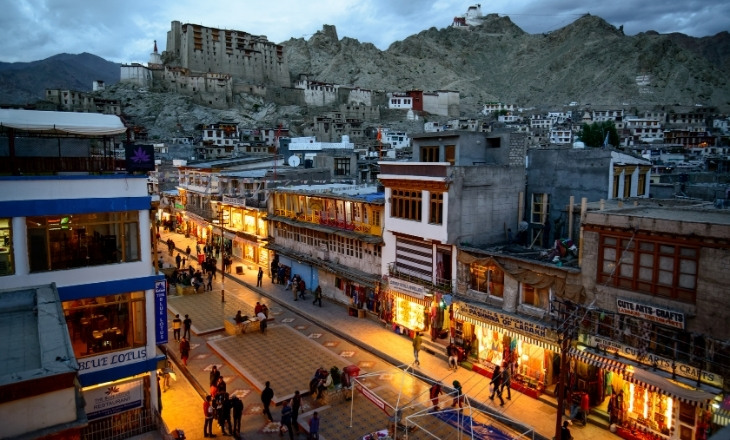
Pangong Lake |
The lake is about 140kms from Leh and takes about 5 hours to reach. The name Pangong is from the Tibetan word Banggong Co meaning "long, narrow, enchanted lake".
Leave early morning if you are planning to come back the same day. On your way, you will cross Chang La pass at the height of 17585 feet; it is the third highest motorable road in the world. The roads are bumpy, but only about 50% of the drive.

If you are lucky, you will have a smooth drive because the road authorities keep working.
The lake is at the height of about 14,270 feet. Home to migratory birds like Brahmani Ducks, the lake is approx. 134 km long. One-third of the lake is in India, while the remaining two-thirds lies in Tibet, which China controls.
This excursion will be your first; therefore, you will be a little reluctant in giving in to the experience. You would want to reach the lake as soon as possible, but you would know how to enjoy it if you are the quintessential traveller. That’s the trademark of a traveller.
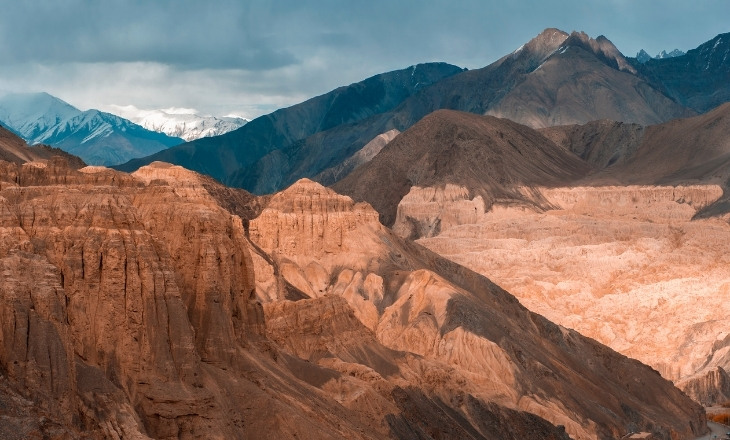
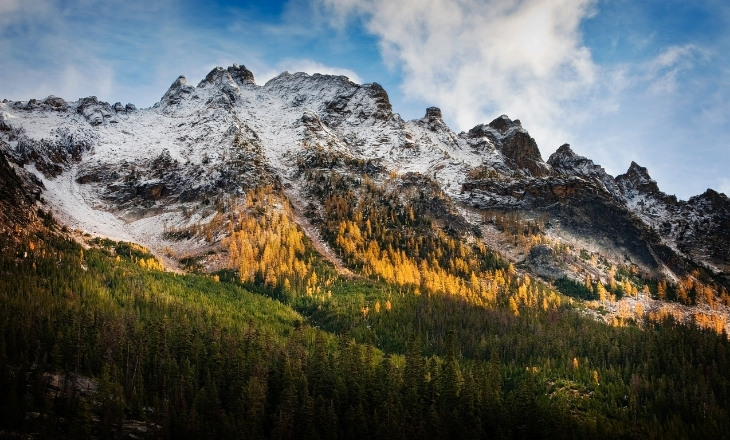
A true traveller finds joy on the road, crossing mountains after mountain. Chances are you would be fixated with how you are feeling and would overlook the amazing rock formations, which have as many shades of earthy hue.
Greenery is still scarce except in the plains between the hills where there are few cows and horses and some variety of sheep grazing. You might even get to see a big rodent-like creature - a kind of species called Ladakhi Marmots.
From what we gather, they are not easily intimidated, as many travellers stop to feed them on the roadside and take pictures as well.
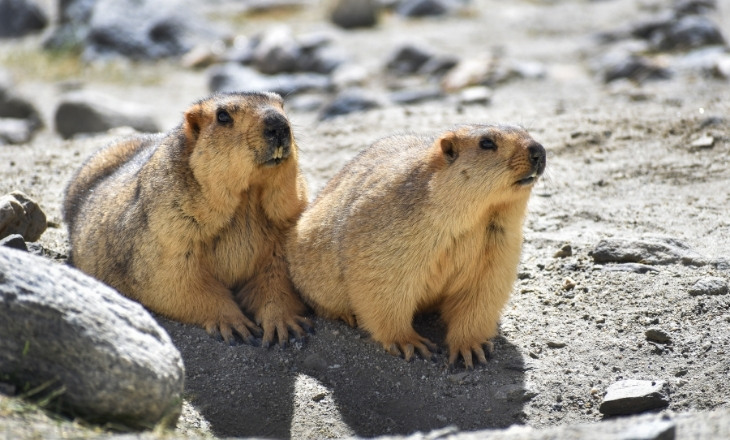
As you proceed to your destination, you cross Sakti, one of the greenest and loveliest villages of Ladakh and then drive uphill towards Chang La pass. Try not to get down if you are dizzy when you pass Chang La, you might end up feeling very, very tired and it would mar the fun of enjoying the lake because till Tangste, there is no major village, only Army camps.
So stick to your seat in your 4wheel drive till you reach the lake. Here is when your motion sickness tablet would be of aid, the one you should have taken an hour before leaving the hotel.
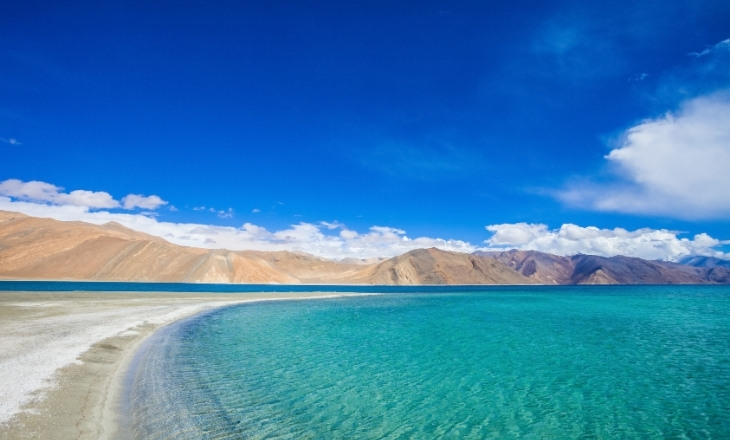
If you are feeling nauseous, go to sleep. Request your driver to wake you up when you are a few miles away from the lake; the anticipation and then the first sight of the lake is breathtakingly beautiful. A Blue, turquoise carpet set against the backdrop of the brown hue mountains is a very rare sight. Give in to it, and witness.
During winter, the lake is completely frozen, despite being saline water. At the banks, the water seems transparent. Pangong has the freshwater infusion through the rains the water mass receives. Rumour has it that China has put in midget submarines from their side, but we can't confirm it.
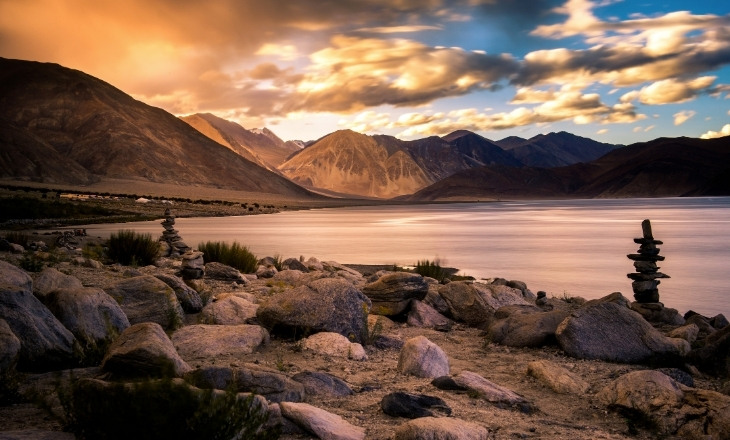
The colour changes every few minutes, letting you see all the shades of blue. There is an excellent play of light and shadow for those who have an artistic eye.
Once you reach, don't expect many facilities. Whatever there is, is very basic.
Few locals have put up tents close to the lake that serve food. Bring your food along, preferably.
Those who are planning to stay overnight, make sure you have pre-booked because the accommodation is very limited nearby, and chances are they might be full when you drop in at the eleventh hour.
The sunrise and sunset are magnificent, and it's worth the stay, although you have to be non-fussy once you are there. Earlier, there were few rooms/tents around, but you would not have a proper washroom. Either they were detached, or you had to go away from the public eye like the medieval days. But now, you can get a decent room/tent with an attached bathroom near the lake itself.
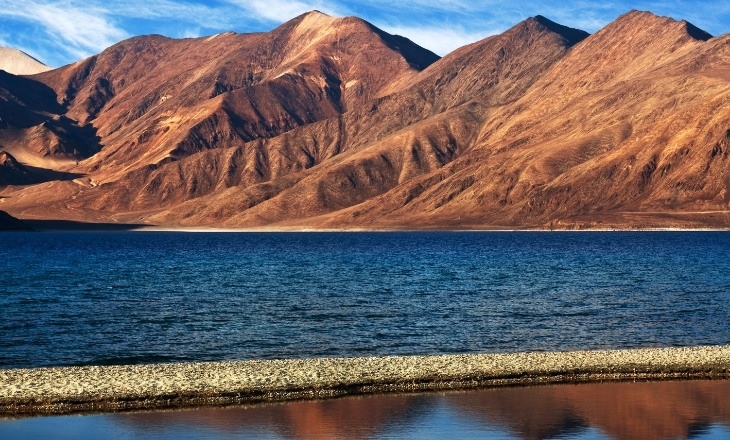
Those with cameras would have to move around to see more of the lake with different angles, move around on wheels, save your energy if shooting in the bright afternoon.
Those with SLRs carry a Polarizer filter with you. The sun is glaring during a clear sky. And many fine details while shooting are missed under hard light.
You would see the difference in the view when looking with a naked eye and then with Polarizer shades/goggles on. Polarizer filter will cut down the glare your lens is capturing.
It's an early sunrise there. If you have planned to stay for the night and experience sunrise, you have to come out as early as 5 am. If you into night photography, you will luckily catch the milky way, especially when the moon is low.
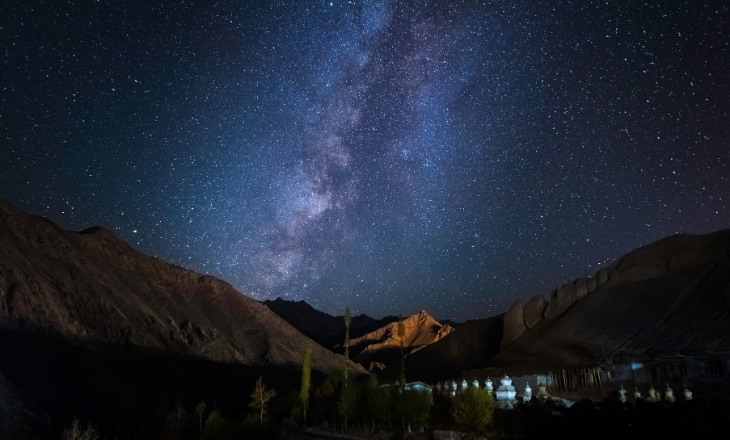
The break of dawn is a very cool and calm state in the morning and suitable for those who like to be in meditation. The best activity you can do is just sit there near the lake as long as you want, witness all around you and let go of everything else. That's when you will start being one in all and all in one.
On your way back, you can stop at all the places you wanted to, so even if you feel tired in doing so, you know you are heading to the hotel and can rest there, content with the fact that you have seen what you had come to see.
If it has been a one day trip to Pangong for you, make sure you come back by 6 pm to gear up for a trip to Nubra the next day. Once at the hotel, eat light and give an hour before you go to sleep.
Nubra Valley |
The next day wake up early and leave latest by 6 am; Nubra Valley is about 150kms from north of Leh and takes about 5 hours to reach there. By now, you would be better accustomed to the high altitude but would still easily tire.

This day also, follow the same rule of not stopping on your way up. You will have ample time later on your way back. That will keep you going at an easy pace as you will pass Khardung La that is at 18,379 ft (5602 m) height (the claim is 17,582 feet), supposedly the highest motorable road in the world but debatable. This is your gateway to the Nubra and Shyok Valleys.
Your first checkpoint will be at South Pullu, where permits are checked and ride on the Nubra side is smooth on the tar road called Beacon Highway.
If you are travelling alone, you would love it; we know what we are talking about here. The following phrase is befitting to describe the feeling, “Loneliness has always been a friend of mine who helped me to discover who I am”.
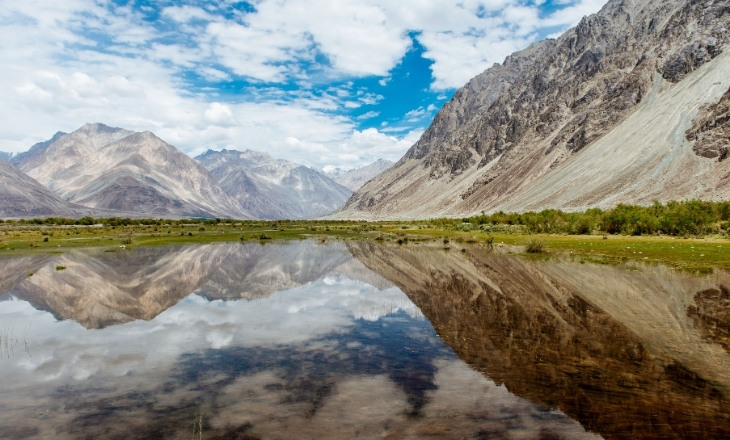
There's nothing to distract your attention, no compulsion to talk to anyone, no need to be democratic and follow the majority. It's you, just you and you alone with the mountains, valleys, melting snow, and a gushing wind following you.
You will totally love one place; it’s a long stretch of the road dividing a huge area of sand into both sides. The road, in the end, seems to disappear in the mountains.
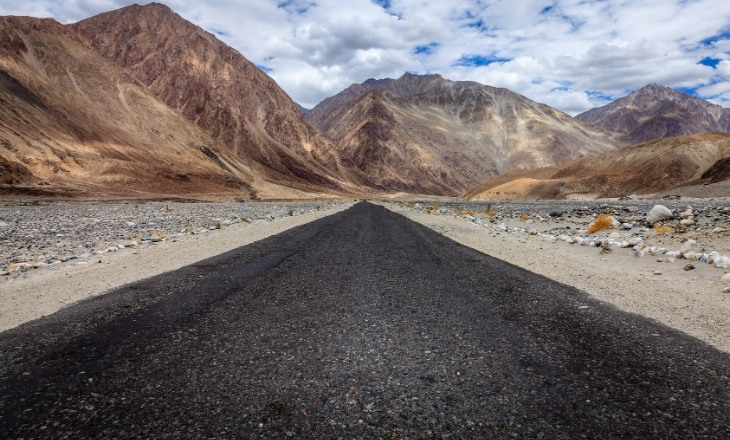
Keep looking out, stop where you want to, and shoot what you want to, no second thoughts about. Don’t leave a chance to regret later.
You will first reach Diskit; it also has a famous Gompa, a Giant Buddha statue overlooking the town. 12 km further on the northwest is Hunder, known for its sand dunes and double hump (Bactrian) camel.
Don't get confused with the Rajasthan type sand dunes. This sand is from the natural corrosion of the mountains, which is accumulated in the valley.

It is awesome to see the desert in the mountain ranges this high with you standing in the middle of it and the mountains encompassing you.
Camel rides on the dunes are one of the activities you can do. Drive a little further to the bank of the Shyok river. The water may look muddy as it carries the soil from the valley with it.
In July, the snow is melting, creating many streams following through the valley, the water is ice cold, there is a spread of green grass alongside the stream and small flowers blossoming. Try stopping at one such turn. Ask your driver to drive down near the stream and sit there for some time taking photos.
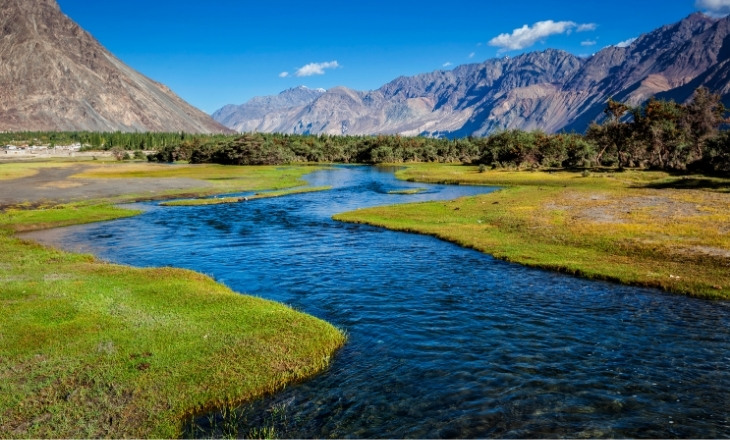
If you want to stay in Nubra valley, then check into the cottages in Hunder.
Besides, around the North Pullu area, there are many cottages for rental. Also, the tour operators have a sleepover facility in tents which they set up in and around North Pullu, Diskit and Hundar.

When you are back in the hotel sated with your excursion, get a little rest and then you may shop for the rest of the evening.
Many young shopkeepers do a good job boosting your ego and sweet talk you into buying out of compulsion.
To save time, strike a polite understanding with the seller to avoid a heavy dose of sweet talk marketing and rather stick to answering what you ask him. Later you can join the local folk dance show the hotels usually organizes to dine and celebrate.
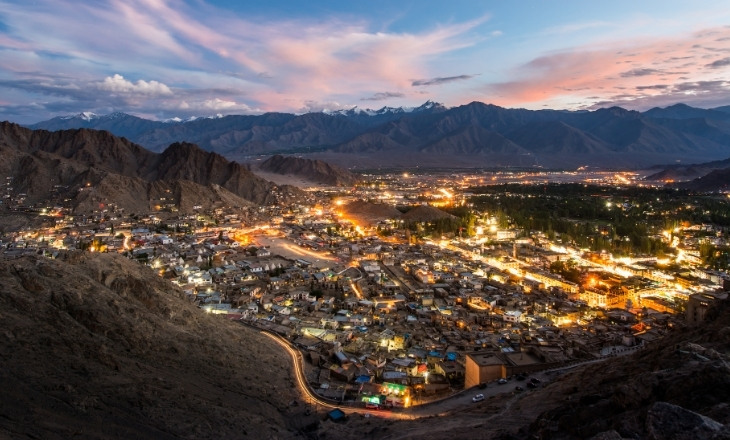
This marks the end of your trip. But this also should mark a new beginning.
Many travellers with less number of days in hand first travel to Nubra Valley - always recommended for better acclimatisation and then, take a direct route from Nubra Valley to Pangong Tso and skip going back to Leh.
In conclusions, remember the following points.
|
When To Go
November - April - Roads into Leh are closed. Snowfall and low temperatures (-30 possible) is expected. Nov-Feb, many hotels and guest houses are closed as well.
March April - accommodation starts to open up.
May - June - Low season. Roads open up. Snowfall at passes can be seen and possible roadblocks for a few hours. You will get accommodation easily.
July - August - Peak season - Snow has mostly melted. Passes may still get light snowfall. The minimum temperature seldom falls below 5 degrees.
September - October - Low season with little snow or rain. Roads are best. Temperatures can go down to -10, and most guesthouses are open at discounted rates.

.png)

.jpg)
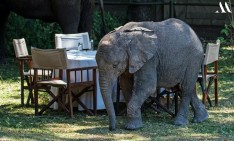
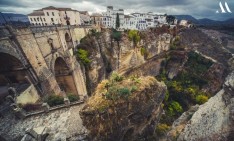
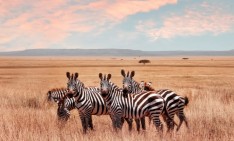
.jpg )
